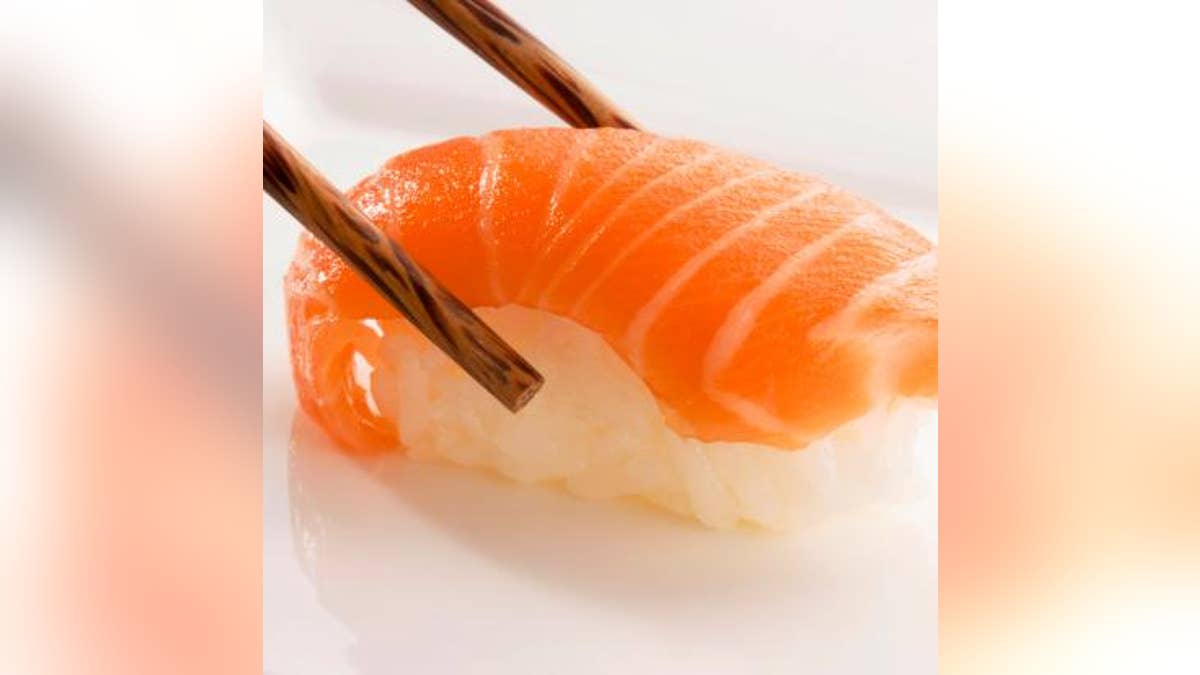
A sushi dinner can weigh in at a paltry 200 to 300 calories or easily top 1,000 calories. What you order — and how much of it — is what makes the difference. We went to nationally-known Registered Dietitian Tanya Zuckerbrot for some tips to help you enjoy your next sushi meal without the worry of gaining weight.
Lighten up by skimping on rice:What’s sushi without rice? Sashimi — and ordering it will save you quite a lot in refined carbs and calories. One piece of tuna sashimi (approximately 1 ounce of protein with no rice) has about 35 calories. Make it a piece of tuna nigiri (with rice) and it’s about 61 calories. A typical sushi roll is prepared with one cup of rice, which amounts to three servings of carbs and 240 calories. And that’s before the fish, vegetables and any sauce has been added.
- Tanya’s Tip: Order "naruto." Have your roll wrapped in cucumber instead of rice and you’ll save a few hundred calories. If you're craving rice, don’t worry. Just ask for your roll to be prepared with “light rice” and, if available, request brown rice for a nutritional boost.
Opt for lean protein and healthy fat:Salmon, tuna and yellow tail (all staples at the sushi bar) are among the leanest proteins you can eat. And, you don't have to eat them raw — most Japanese restaurants offer a selection of broiled, grilled or steamed seafood.
Go ahead and enjoy a few pieces of fatty cold-water fish such as mackerel and eel, which are both rich in heart-healthy omega 3. You can still keep the calories down by rounding out your meal with a vegetarian roll made with cucumber, asparagus or avocado (instead of fish). Keep in mind that while avocados are a good source of healthy fat, they are also higher in calories than other vegetables, so eat them in moderation.
- Tanya’s tip: If sushi is a mainstay of your diet, regularly include vegetarian rolls to help reduce your intake of mercury from fish. The USDA recommends that women who are pregnant or breastfeeding limit their fish and seafood intake to 12 ounces per week.
Avoid “Americanized” sushi:As with many ethnic cuisines, Americanized versions are usually less healthy than the original old-country recipes. At a sushi restaurant, you’ll see this particularly in the offering of fattier rolls using ingredients such as cream cheese, duck, tempura flakes, mayonnaise and deep fried fish. As a rule of thumb, the more words used to describe a roll, the fattier it’s going to be. For example, a basic salmon avocado roll has 304 calories. Add a tablespoon of cream cheese and you get another 50 calories; a roll with Japanese mayo tacks on another 90 calories.
- Tanya’s tip: Avoid the mayo, typically found in “spicy” versions of common rolls. Each tablespoon of spicy mayo packs an additional 100 calories and 11 grams of fat into the roll, and possibly more for the tablespoon of cream cheese used in a Philadelphia roll. Even creamy Japanese salad dressings can add significant calories to simple greens you’re eating. Ask for dressings on the side or avoid them all together.
Don’t be tempted by tempura:Stay away from menu items billed as “tempura” or “crunchy,” as these mean the dishes are breaded and deep fried. Shrimp by itself is low in calories and fat, but served up in a shrimp tempura roll, it packs about 544 calories and 13 grams of fat!
- Tanya’s tip: To avoid saturated fat and extra calories from frying, be sure none of the ingredients in a dish are fried. Remember, what appears like a standard roll on the outside may contain fried fish or breading on the inside, so read descriptions closely.
Know proper portions:While traditional sushi is a healthy food, it’s still important to stick to proper portions if your aim is to eat light. For most of us, an order of miso soup and a roll doesn’t quite seem like a meal. Rather, it’s more like soup, salad, and two to three rolls, and that’s a lot of calories and fat when you consider the rice and any sauces used. As a guide, figure a sensible sushi meal consists of six sushi or sashimi pieces, or one to two basic rolls.
- Tanya’s tip: Avoid the “combo” specials that often come with soup, salad and three rolls, and definitely go easy on sauces by omitting them or ordering them on the side.
Keep sodium down:Some Japanese foods are very high in sodium, the culprit behind water weight and bloating. The trick is to choose foods that have little to no sodium, such as sushi and sashimi.
- Tanya’s tip: Use less soy sauce or request the low-sodium kind. Also keep in mind that anything “miso” is high in sodium. Even a serving of edamame may be flavored with salt, so ask if you can have it salt-free.




















